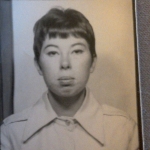The usual "compliance" for insurance purposes is not a simple total number of hours. It is usually tied to the distribution of those hours across a sufficient number of days. One common standard is At least four hours per 24-hour day on at least 70% of the 24-hour days during a 30 day period. Using the machine for 11 hours on 10 days and not at all on the remaining 20 days gives a total usage of 121 hours, but will not meet compliance requirements for most insurance companies. Note that 70% of 30 days is 21 days. Using the machine for exactly four hours on 21 of the days and not at all on the remaining 9 days gives a total usage of 84 hours, but probably will meet compliance requirements for most insurance companies.LSAT wrote:I think the usual requirement is averaging 4 hours per night for 30 days. You will need the machine to show 120+ hours at the end of 30 days.
To the OP: You need to find out directly from your insurance company what is required for compliance purposes. Don't take the DME's word for what they require and don't take the doc's word. When you are on the phone you might want to ask for a supervisor and tell them you are worried about compliance because of the large number of days you and your daughters sleep in the car at the community shelter due to tornado watches/warnings and ask them what kind of documentation you will need to provide to document the days where compliance is difficult because of the weather.
Once you know exactly what your insurance company's rules are, then you'll be in a position to plan for them. Some tips that might help:
1) Ask your DME about whether the machine they provide can be used in a car with an appropriate power adapter. I've had no trouble using my PR System One machine on cross country drives done at night, for example. When I'm not driving I simply plug my PR S1 into the same power converter that hubby uses for his laptop when I'm driving. And it works fine. Of course, the car is on so I'm not draining the battery. I don't know how long the car's battery would last if it were powering my BiPAP when the car itself was not running. And, of course, it's not a good idea to run the car for extended periods of time in the underground parking structure at the community shelter.
2) Contact the folks in charge of the community shelter and explain the situation to them. They may be able to tell you where you can park in order to have some kind of access to a power outlet. In that case, buy a heavy duty extension cord of the appropriate length and keep it stashed in the car with whatever other emergency supplies you usually take with you when the weather is threatening.
3) On the days following particularly nasty nights where you've been at the community shelter all night long and when you have not been able to use the machine for the required four hours, plan on using the machine for four hours during the daytime, maybe while the girls are in school. Note that the four hours of usage does not need to be in one continuous chunk to satisfy most insurance companies. Nor do you have to prove you were asleep when using the machine. But do note that the machines can tell the difference between being left ON for four hours without a person attached to the other end of the hose (blower hours) and being USED for four hours---i.e. running for four hours WITH a person attached to the other end of the hose.
4) Give some thought to possibly asking for the Transcend II travel CPAP as your main machine. This machine does record full efficacy data (although you don't get the wave form). A sample report is shown at https://88559364175b176f8341-7518c0400f ... report.pdf. And although it is not part of the standard machine bundle, this particular CPAP has a small overnight battery available for $295 from our host. Also there is also a power adapter available from our host for $130 that the manufacturer claims will allow the Transcend to run overnight off of a vehicle's battery without depleting the battery.













